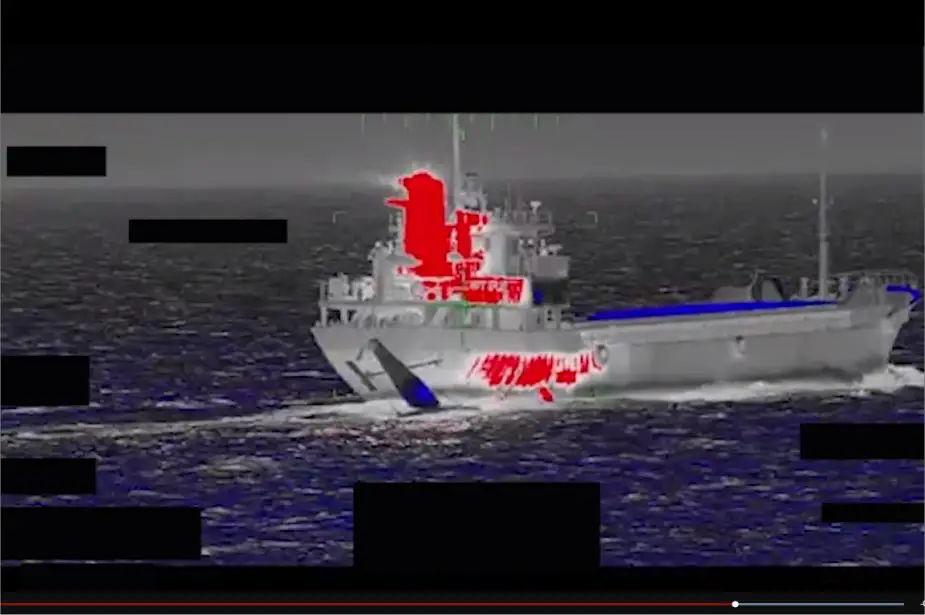According to information published by the US DoD on August 30, 2022, the U.S. Navy prevented a support ship from Iran’s Islamic Revolutionary Guard Corps Navy (IRGCN) from capturing an unmanned surface vessel operated by the U.S. 5th Fleet in the Persian Gulf.
Follow Navy Recognition on Google News at this link
 Saildrone Explorer USV and Iran’s Islamic Revolutionary Guard Corps Navy's support ship Shahid Baziar (Picture source: US DoD)
Saildrone Explorer USV and Iran’s Islamic Revolutionary Guard Corps Navy's support ship Shahid Baziar (Picture source: US DoD)
While transiting international waters around 11 p.m. (local time), Aug. 29, U.S. 5th Fleet observed IRGCN support ship Shahid Baziar towing a Saildrone Explorer unmanned surface vessel (USV) in an attempt to detain it.
U.S. Navy patrol coastal ship USS Thunderbolt (PC 12) was operating nearby and immediately responded. U.S. 5th Fleet also launched an MH-60S Sea Hawk from Helicopter Sea Combat Squadron 26, based in Bahrain.
The actions taken by U.S. naval forces in response resulted in the IRGCN vessel disconnecting the towing line to the USV and departing the area approximately four hours later. The U.S. Navy resumed operations without further incident.
The Saildrone Explorer USV the IRGCN attempted to confiscate is U.S. government property and is equipped with sensors, radars, and cameras for navigation and data collection. This technology is available commercially and does not store sensitive or classified information.
About the USV
The Saildrone Explorer is a 23-foot-long, 16-foot-tall USV reliant on wind power for propulsion. The vessel houses a package of sensors powered by solar energy for building a shared picture of the surrounding seas.
Sailing at an average speed up to three knots, the Explorer carries a suite of scientific sensors for the collection of ocean data. The USV fleet has logged more than 10,000 days at sea in some of the most extreme weather conditions on the planet.



